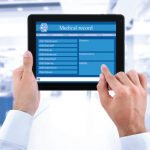Documenting evaluation and management (E/M) services involves many factors, and it’s important to code to the most appropriate level of service to avoid compliance risks. To assist providers with documentation, the Centers for Medicare & Medicaid Services (CMS) provides its 1995 and 1997 Documentation Guidelines for Evaluation and Management Services. For billing purposes, either version (but not a combination of the two) can be used to document a patient encounter.
To select the appropriate level of E/M services provided, the three key components to consider—as defined by the American Medical Association’s Current Procedural Terminology [CPT] and endorsed by the CMS—are history, examination and medical decision making (MDM).
History
The four history types are:
- Problem focused;
- Expanded problem focused;
- Detailed; and
- Comprehensive.
Each type has required documentation elements that, according to the CMS’ Evaluation and Management Services guide, may include:
- Chief complaint;
- History of present illness;
- Review of systems; and
- Pertinent past, family and/or social history.
Examination
The levels of E/M services are based on the four types of history/examination. In documenting examinations, the CMS recommends keeping the following in mind:
- Document specific, abnormal and relevant negative findings;
- Describe abnormal or unexpected findings of the examinations of any asymptomatic body area(s) or organ system(s); and
- Use a brief statement or notation indicating “negative” or “normal” to document normal findings related to unaffected area(s) or asymptomatic organ system(s).
Medical Decision Making
“Medical decision making is a key component of E/M, [and] includes the number of diagnoses and treatment options, data to be reviewed and level of risk to the patient,” says Raemarie Jimenez, CPC, CPB, CPMA, CPPM, CPC-I, CCS, vice president of membership and certification for AAPC.
The CMS lists four types of decision making: straightforward, low complexity, moderate complexity and high complexity. Billing for an E/M service requires selecting a code that best represents patient type (i.e., new or established), setting (e.g., physician’s office) and level of service performed. Further, “Because the level of E/M service is dependent on two or three key components, performance and documentation of one component (e.g., examination) at the highest level does not necessarily mean that the encounter in its entirety qualifies for the highest level of E/M service,” according to the CMS.
Medical necessity also comes into play with regard to the level of service provided. The CMS notes that the volume of documentation does not provide a rationale for determining the specific level of service to bill.


